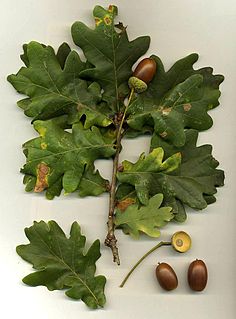
Osborne House is a former royal residence in East Cowes, Isle of Wight, United Kingdom. The house was built between 1845 and 1851 for Queen Victoria and Prince Albert as a summer home and rural retreat. Prince Albert designed the house himself in the style of an Italian Renaissance palazzo. The builder was Thomas Cubitt, the London architect and builder whose company built the main façade of Buckingham Palace for the royal couple in 1847. An earlier smaller house on the site was demolished to make way for a new and far larger house, though the original entrance portico survives as the main gateway to the walled garden.

The Crystal Palace was a cast-iron and plate-glass structure originally built in Hyde Park, London, to house the Great Exhibition of 1851. The exhibition took place from 1 May until 15 October 1851, and more than 14,000 exhibitors from around the world gathered in its 990,000 square feet (92,000 m2) exhibition space to display examples of technology developed in the Industrial Revolution. Designed by Joseph Paxton, the Great Exhibition building was 1,851 feet (564 m) long, with an interior height of 128 feet (39 m). It was three times the size of St Paul's Cathedral.

The Great Exhibition of the Works of Industry of All Nations or The Great Exhibition, an international exhibition, took place in Hyde Park, London, from 1 May to 15 October 1851. It was the first in a series of World's Fairs, exhibitions of culture and industry that became popular in the 19th century, and it was a much anticipated event. The Great Exhibition was organized by Henry Cole and by Prince Albert, husband of the reigning monarch of the United Kingdom, Queen Victoria. Famous people of the time attended, including Charles Darwin, Samuel Colt, members of the Orléanist Royal Family and the writers Charlotte Brontë, Charles Dickens, Lewis Carroll, George Eliot, Alfred Tennyson and William Makepeace Thackeray.

Sir Joseph Paxton was an English gardener, architect and Member of Parliament, best known for designing the Crystal Palace, and for cultivating the Cavendish banana, the most consumed banana in the Western world.

Sir Henry Cole was a British civil servant and inventor who facilitated many innovations in commerce and education in 19th century in the United Kingdom of Great Britain and Ireland. Cole is credited with devising the concept of sending greetings cards at Christmas time, introducing the world's first commercial Christmas card in 1843.
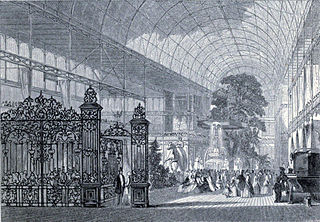
The Royal Commission for the Exhibition of 1851 is an institution founded in 1850 to administer the international exhibition of 1851, officially called the Great Exhibition of the Works of Industry of all Nations. The Great Exhibition was held in The Crystal Palace in Hyde Park London, England. The enormous building was designed by Joseph Paxton for the Exhibition and construction was supervised by William Cubitt using a cast iron space frame for the glass panes, with wooden beams for flooring.
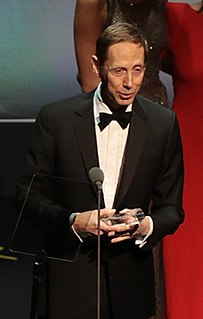
Nicholas David Gordon "Nick" Knight OBE is a British fashion photographer and founder and director of SHOWstudio.com. He is an honorary professor at University of the Arts London and was awarded an honorary Ph.D. by the same university. He has produced books of his work including retrospectives Nicknight (1994) and Nick Knight (2009). In 2016, Knight's 1992 campaign photograph for fashion brand Jil Sander was sold by Phillips auction house at the record-breaking price of HKD 2,360,000.
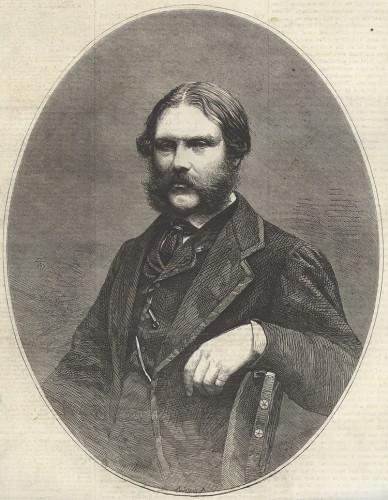
Francis Fowke RE was a British engineer and architect, and a Captain in the Corps of Royal Engineers. Most of his architectural work was executed in the Renaissance style, although he made use of relatively new technologies to create iron framed buildings, with large open galleries and spaces.

Mintons was a major company in Staffordshire pottery, "Europe's leading ceramic factory during the Victorian era", an independent business from 1793 to 1968. It was a leader in ceramic design, working in a number of different ceramic bodies, decorative techniques, and "a glorious pot-pourri of styles - Rococo shapes with Oriental motifs, Classical shapes with Medieval designs and Art Nouveau borders were among the many wonderful concoctions". As well as pottery vessels and sculptures, the firm was a leading manufacturer of tiles and other architectural ceramics, producing work for both the Houses of Parliament and United States Capitol.

The Tower House, 29 Melbury Road, is a late-Victorian townhouse in the Holland Park district of Kensington and Chelsea, London, built by the architect and designer William Burges as his home. Designed between 1875 and 1881, in the French Gothic Revival style, it was described by the architectural historian J. Mordaunt Crook as "the most complete example of a medieval secular interior produced by the Gothic Revival, and the last". The house is built of red brick, with Bath stone dressings and green roof slates from Cumbria, and has a distinctive cylindrical tower and conical roof. The ground floor contains a drawing room, a dining room and a library, while the first floor has two bedrooms and an armoury. Its exterior and the interior echo elements of Burges's earlier work, particularly the McConnochie House in Cardiff and Castell Coch. It was designated a Grade I listed building in 1949.

John Thomas (1813–1862) was a British sculptor and architect, who worked on Buckingham Palace and the Palace of Westminster.

George Wallis (1811–1891) was an artist, museum curator and art educator. He was the first Keeper of Fine Art Collection at South Kensington Museum in London.
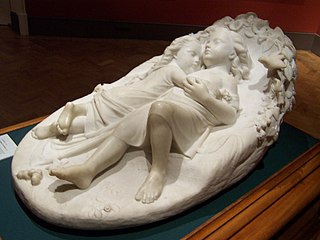
John Bell (1811–1895) was a British sculptor, born in Bell's Row, Great Yarmouth, Norfolk. His family home was Hopton Hall, Suffolk. His works were shown at the Great Exhibition of 1851, and he was responsible for the marble group representing "America" on the Albert Memorial in London.
Anton Seuffert was born in Bohemia. He was a cabinetmaker with a particular expertise in the art of marquetry.

Daniel Pabst was a German-born American cabinetmaker of the Victorian Era. He is credited with some of the most extraordinary custom interiors and hand-crafted furniture in the United States. Sometimes working in collaboration with architect Frank Furness (1839–1912), he made pieces in the Renaissance Revival, Neo-Grec, Modern Gothic, and Colonial Revival styles. Examples of his work are in the collections of the Metropolitan Museum of Art, the Philadelphia Museum of Art, the Art Institute of Chicago, and the Victoria and Albert Museum in London.

Richard Coeur de Lion is a Grade II listed equestrian statue of the 12th-century English monarch Richard I, also known as Richard the Lionheart, who reigned from 1189–99. It stands on a granite pedestal in Old Palace Yard outside the Palace of Westminster in London, facing south towards the entrance to the House of Lords. It was created by Baron Carlo Marochetti, an Italian sculptor whose works were popular with European royalty and the nobility, though often less well regarded by critics and the artistic establishment. The statue was first produced in clay and displayed at The Great Exhibition in 1851, where it was located outside the west entrance to the Crystal Palace. It was well received at the time and two years later Queen Victoria and Prince Albert headed a list of illustrious subscribers to a fund that aimed to raise money for the casting of the statue in bronze.

The Great Bookcase is a large piece of painted furniture designed by the English architect and designer William Burges. The bookcase is 10 feet (3.0 m) high and 5 feet (1.5 m) wide. It has been described as "the most important example of Victorian painted furniture ever made."
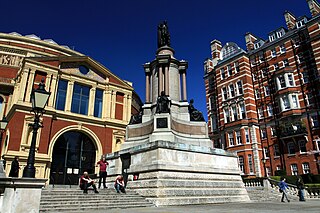
The Memorial to the Great Exhibition is an outdoor monument commemorating the Great Exhibition (1851) and depicting Albert, Prince Consort, designed by Joseph Durham with modifications by Sydney Smirke and located south of Royal Albert Hall in London, United Kingdom. Originally installed in the Royal Horticultural Society gardens in 1863, it was relocated to its current site during 1891–1893 when the gardens were reconstructed and Prince Consort Road was created.
The firm of Holland & Sons (1803–1942) became from 1843 one of the largest and most successful cabinet makers, and a rival to Gillows of Lancaster and London.

Sir Benjamin Thomas Brandreth-Gibbs was an agriculturalist and horticulturalist who was knighted for his services to both by Queen Victoria in 1878.


